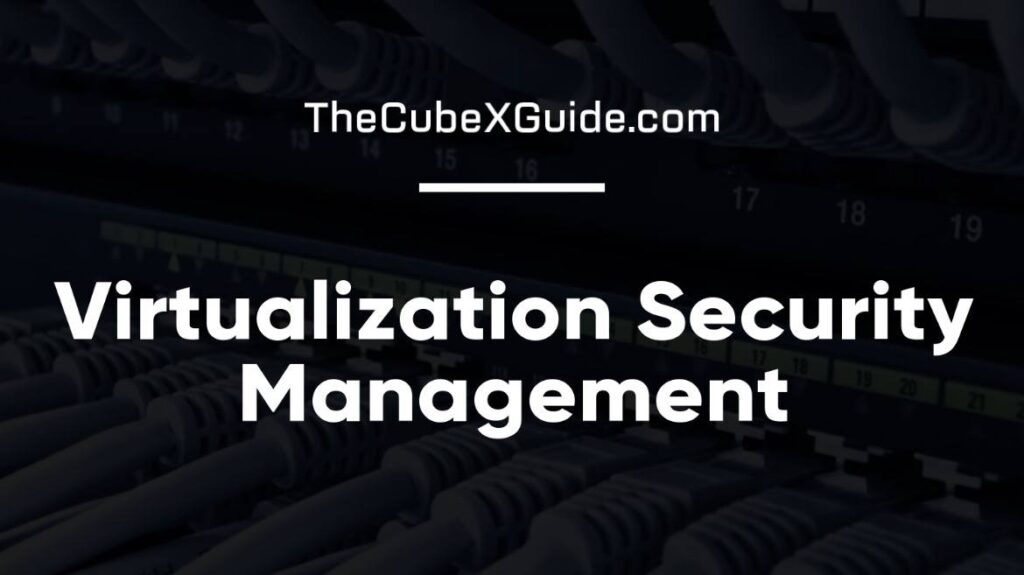Security solutions that are software-based and created to function within a virtualized IT environment are referred to as virtualized security, also known as security virtualization. This contrasts with conventional hardware-based network security, which is static and runs on hardware like conventional switches, routers, and firewalls.
Hardware-based security is rigid, whereas virtualized security is adaptable and dynamic. It is frequently cloud-based and can be installed anywhere in the network without being bound to a specific device. The ability for security services and functions to move around with dynamically produced workloads is crucial for virtualized networks, in which operators spin up workloads and applications on-demand.
Virtualized security must also take into account cloud security issues (such as isolating multitenant setups in public cloud settings). In hybrid and multi-cloud systems, where data and workloads move throughout a complex ecosystem including several providers, the flexibility of virtualized security is useful.
What advantages does virtualized security offer?
In addition to being more adaptable and effective than traditional physical protection, virtualized security is now practically required to keep up with the complex security requirements of a virtualized network. Here are some of its particular advantages:
- Cost-effectiveness: Virtualized security enables a company to keep a secure network running without having to spend significantly more on pricey proprietary hardware. Usage-based pricing for cloud-based virtualized security services can result in significant savings for businesses who manage their resources effectively.
- Flexibility: Security operations that are virtualized may follow workloads wherever they go, which is essential in a virtualized environment. It offers protection in scenarios with different data centers, various clouds, and hybrid clouds, enabling a company to benefit fully from virtualization while also maintaining data security.
- Operating effectivenessVirtualized security can be deployed more quickly and easily than hardware-based security because it doesn’t require IT teams to set up and configure several hardware appliances. Instead, they may quickly scale security systems by setting them up using centralised software. Security-related duties can be automated when security technology is used, which frees up more time for IT employees.
- Regulatory compliance: Virtualized security is essential for organisations that must maintain regulatory compliance because traditional hardware-based security is static and unable to keep up with the needs of a virtualized network.
What is the operation of virtualized security?
The capabilities of conventional security hardware appliances (such firewalls and antivirus software) can be deployed via software using virtualized security. Virtualized security can also carry out further security operations. These features, which are intended to meet the particular security requirements of a virtualized system, are only made possible by the benefits of virtualization.
For instance, an organisation can employ techniques like micro-segmentation to minimise the potential attack surface or put security controls (like encryption) between the application layer and the underlying infrastructure.
Virtualized security can be implemented as a hosted service on a virtual machine or as an application running directly on a bare metal hypervisor (which it can use to enable efficient application monitoring). In contrast to physical security, which is dependent on a single device, it can be swiftly placed where it is most useful.
What dangers do virtualized security systems pose?
IT may struggle with the increased complexity of virtualized security, which raises the risk. In a virtualized environment, it is more challenging to follow workloads and programmes as they move across servers, making it more challenging to monitor security setups and rules. Additionally, the simplicity of setting up virtual machines may lead to security flaws.
However, it’s crucial to keep in mind that many of these dangers exist in virtualized environments regardless of whether security services are virtualized or not. Such risks can be reduced by adhering to business security best practises (such as spinning off virtual machines when they are no longer required and employing automation to maintain security rules current).
What distinguishes virtualized security from physical security?
Traditional physical security is static and inflexible since it is hardware-based. The conventional method relies on devices placed at key nodes throughout a network, and it frequently focuses on securing the network perimeter. (as with a traditional firewall). Although workloads and applications are dynamically created and the perimeter of a virtualized, cloud-based network is inevitably porous, this increases the potential attack surface.
In addition, port and protocol filtering is a key component of traditional security, but it is worthless in a virtualized environment because addresses and ports are issued on a purely ad hoc basis. Traditional hardware-based security is insufficient in this environment; instead, a cloud-based network needs virtualized security that can move around the network with workloads and applications.
What varieties of virtualized security are there?
Network security, application security, and cloud security are only a few of the many characteristics and varieties of virtualized security. There are certain virtualized security solutions that are essentially improved virtualized versions of more established security technologies. (such as next-generation firewalls). Others are cutting-edge modern technology that are woven into the virtualized network’s basic structure.







